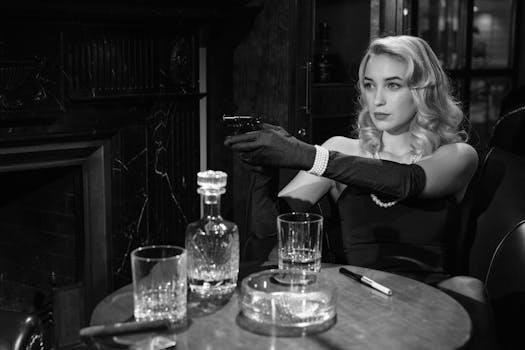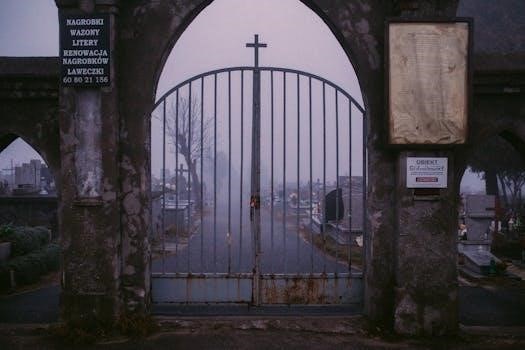Rip Van Winkle’s Origins and Publication
Washington Irving’s “Rip Van Winkle” first appeared in his collection,
The Sketch Book of Geoffrey Crayon, Gent․, in 1819․ This publication helped launch his career, bringing him international fame․
It is a story from a collection of stories․
First Appearance in “The Sketch Book”
“Rip Van Winkle” debuted within Washington Irving’s The Sketch Book, a collection that significantly shaped American literature․ Published in 1819, this volume introduced readers to Irving’s distinctive blend of humor, folklore, and romanticism․ The story, alongside others in the collection, quickly established Irving’s literary reputation, both in America and internationally․
It was a turning point in his career, marking his transition from earlier satirical pieces to more imaginative and enduring works․ The book’s success was pivotal, cementing its place in literary history and ensuring the stories continued relevance to this day․

The Plot of Rip Van Winkle
The narrative follows Rip, a man who escapes his nagging wife, encounters mysterious figures, and falls into a long sleep; Upon awakening, he finds a changed world․
Rip’s Escape from Domestic Life
Rip Van Winkle is depicted as a good-natured but lazy man, often burdened by his wife’s constant nagging․ He seeks solace from his domestic troubles in the outdoors, frequently wandering into the nearby mountains with his dog, Wolf․ This escape is not just a physical departure, but also a symbolic flight from the pressures of his home life․ His preference for the company of his dog and the tranquility of nature underscores his desire to avoid the responsibilities and conflicts of his daily existence․ This sets the stage for his extraordinary encounter in the mountains․
The Encounter in the Mountains
While wandering in the mountains, Rip Van Winkle stumbles upon a peculiar group of men playing ninepins in a secluded glen․ These men are described as strange and old-fashioned, with a mysterious air about them․ They are engaged in a game of sorts with a peculiar keg of liquor․ Rip is offered a drink of the strange brew, and he partakes․ This encounter is otherworldly and fantastical, marking the beginning of Rip’s long, transformative sleep․ It is a pivotal moment, introducing the supernatural element that alters his life․
The Long Sleep and Return
After drinking the mysterious liquor, Rip Van Winkle falls into a deep sleep․ He sleeps for twenty years, oblivious to the changes occurring in the world․ Upon waking, he returns to his village, finding it greatly altered․ The people are different, and he is no longer recognized․ His old friends and family are gone or aged․ The world he knew has vanished, leaving him a stranger in his own home․ This return marks a stark contrast between his past and the present․ It is a jarring experience for him․
Themes and Interpretations
“Rip Van Winkle” explores themes of change and the passage of time․ It also provides social commentary on American society, particularly regarding the shift from colonial times to the new republic․
Change and the Passage of Time
The story of Rip Van Winkle is a poignant exploration of how time transforms individuals and societies․ Rip’s twenty-year sleep serves as a dramatic device to highlight the swiftness of change․ Upon awakening, he finds his familiar world altered beyond recognition․ The people he knew are older or gone, and the quiet village has become a bustling town with new customs and political ideas․ This sudden shift underscores the theme of the relentless march of time and its impact on life and culture․ The narrative captures the disorientation and alienation that can accompany profound change․
Social Commentary on American Society
“Rip Van Winkle” subtly incorporates social commentary on the young American society of the late 18th and early 19th centuries․ The story reflects a shift from the old, quiet, pre-Revolutionary way of life to the more bustling and politically engaged atmosphere of the post-Revolutionary era․ Rip’s confusion upon his return mirrors the disorientation some might have felt with these rapid changes․ The character’s escape from domestic life can be interpreted as a commentary on societal expectations and the desire for personal freedom․ The tale, therefore, serves as a reflection on the evolving American identity․

Adaptations of Rip Van Winkle
Over the past two centuries, “Rip Van Winkle” has been adapted into various media, including stage plays, films, cartoons, and music, demonstrating its enduring appeal․
Stage Dramatizations and Joseph Jefferson
The character of Rip Van Winkle has seen numerous dramatizations on stage, most notably through the performances of actor Joseph Jefferson during the 19th century․ Jefferson’s portrayal of Rip became iconic, solidifying the character’s place in popular culture․ His various stage adaptations brought the story to life for countless audiences, enhancing its emotional impact and charm․ These dramatizations often focused on the humor and pathos of Rip’s situation, emphasizing his bewildered return to a changed world․ The Sigman Brothers in Chicago also adapted the story for the stage․ Jefferson’s interpretation remains a benchmark in theatrical adaptations of literary works․
Film, Cartoon, and Other Media Versions
“Rip Van Winkle” has been adapted into various formats beyond the stage․ It has appeared in films, cartoons, and other media over the past two centuries․ These adaptations range from faithful retellings to more modern interpretations․ The story’s themes of change and time make it suitable for different artistic approaches, from animation to live-action movies․ Various cartoons and short films have brought the character to new generations, often with a focus on the comical aspects of his long sleep․ The story’s adaptability highlights its enduring appeal across different forms of media․ The story has also been adapted into music․

Textual Analysis of “Rip Van Winkle”
The story’s text showcases Irving’s style, including his use of dialect and descriptive language; The full text is available in various digital formats․
The story has notes․
Full Text Availability and Digital Formats
The complete text of “Rip Van Winkle” is widely accessible in numerous digital formats, allowing readers to experience the story across various platforms․ Online archives, such as the Internet Archive, provide downloadable versions in formats like PDF and text files․ These digital versions often include the original illustrations and notations, enhancing the reader’s understanding of the story’s historical context․ Furthermore, many websites dedicated to classic literature host the full text, making it easily searchable and shareable․ This widespread availability ensures that Irving’s tale remains accessible to modern audiences․
The Use of Dialect and Language
Irving’s “Rip Van Winkle” utilizes a distinct narrative style, incorporating elements of early 19th-century American English, with a touch of Dutch influence from the setting․ The text includes a descriptive language that reflects the historical context of the story․ While not heavily laden with dialect, the language helps to establish the setting and the era in which the tale is set․ The author’s descriptive prose adds to the charm and humor of the story, providing a rich reading experience for those seeking the original text․

Illustrations and Editions
Numerous illustrated editions of “Rip Van Winkle” exist, including a notable 1921 version by N․C; Wyeth․
These editions enhance the story, bringing the characters and settings to life through vivid artwork․
N․C․ Wyeth’s Illustrated Version
N․C․ Wyeth’s 1921 illustrated edition of “Rip Van Winkle” stands out with its distinct artistic style․ This edition features a slender red hardcover with gold-stamped text․ Inside, coated stock pages contain both color and black-and-white illustrations․ Wyeth’s comfortable, spacious style, with hand-drawn page numbers, adds to the charm․ His illustrations bring the story’s characters and scenes to life․ The artwork is presented in a comfortable, spacious format, characteristic of Wyeth’s work, making it a visually rich experience for readers of all ages․ The combination of detailed illustrations and classic text makes it a valued edition․
Other Illustrated Editions
Beyond N․C․ Wyeth’s notable version, various other illustrated editions of “Rip Van Winkle” have been published․ These editions feature diverse artistic interpretations, bringing different perspectives to the classic tale․ Many include both full-page color and smaller black-and-white illustrations, enriching the reading experience․ Some early 20th-century editions showcase unique styles, with detailed drawings accompanying the text, and some editions include a mix of full-page color illustrations and smaller black and white ones․ These different illustrated editions demonstrate the story’s enduring appeal and adaptability․ Each edition offers a unique way to experience the story․
